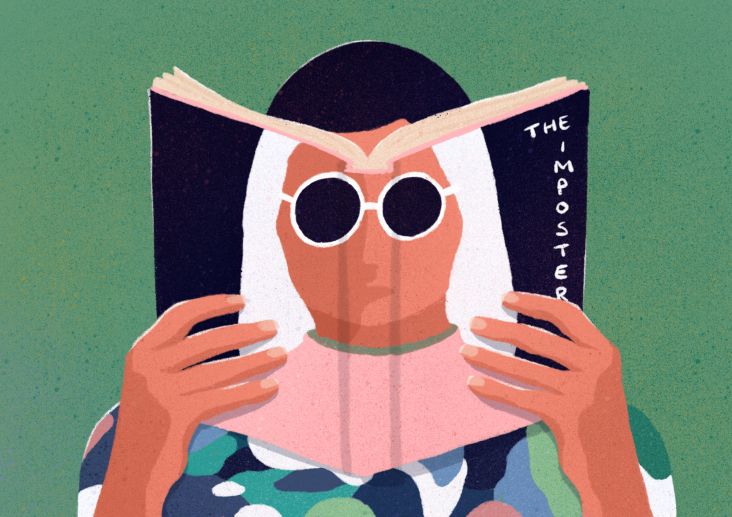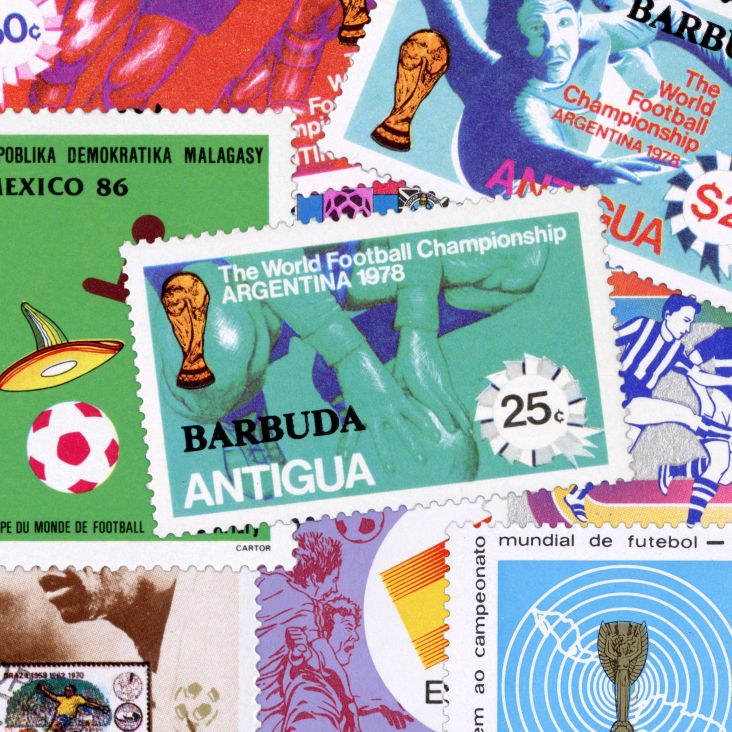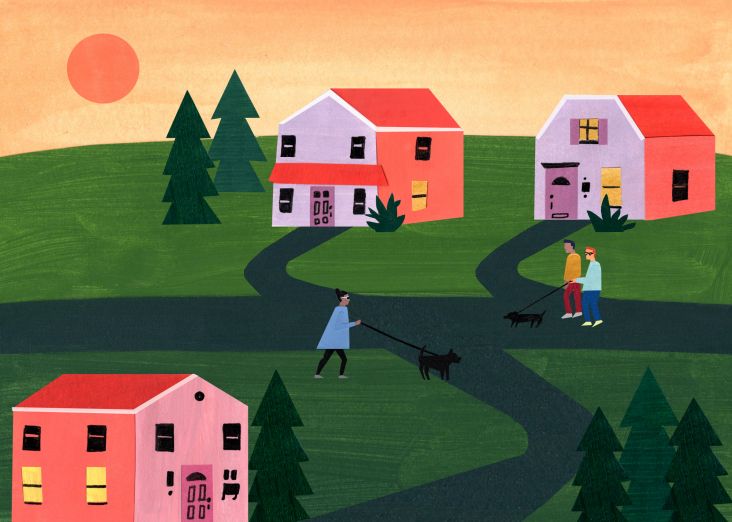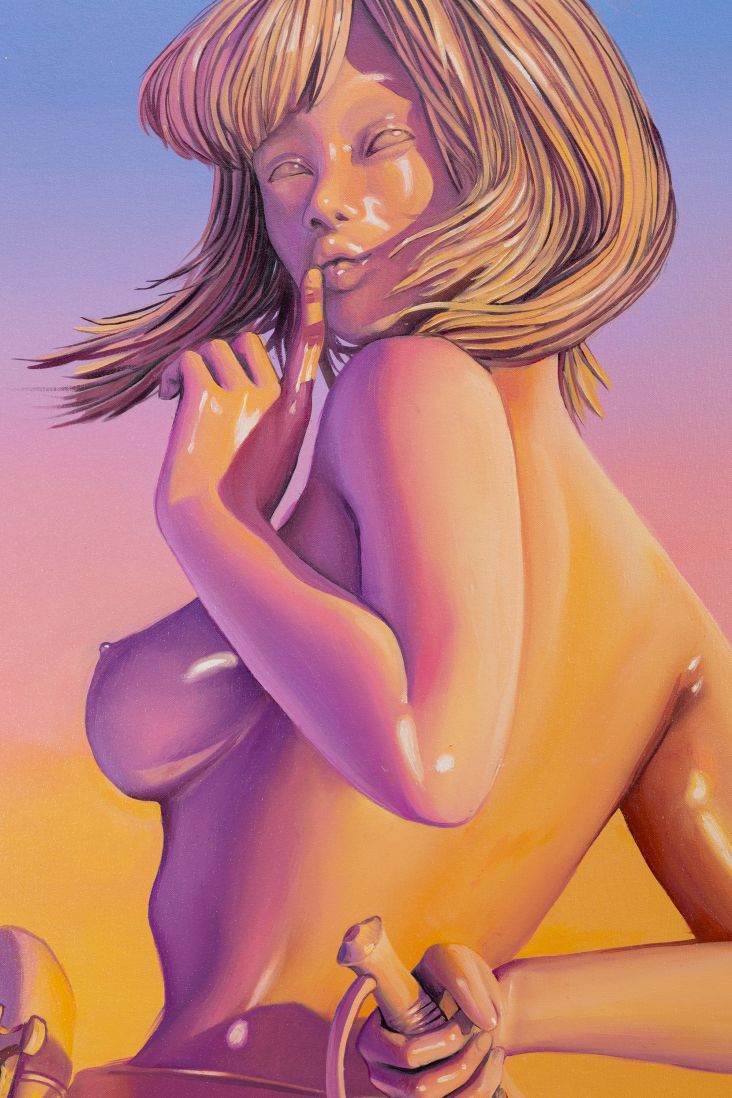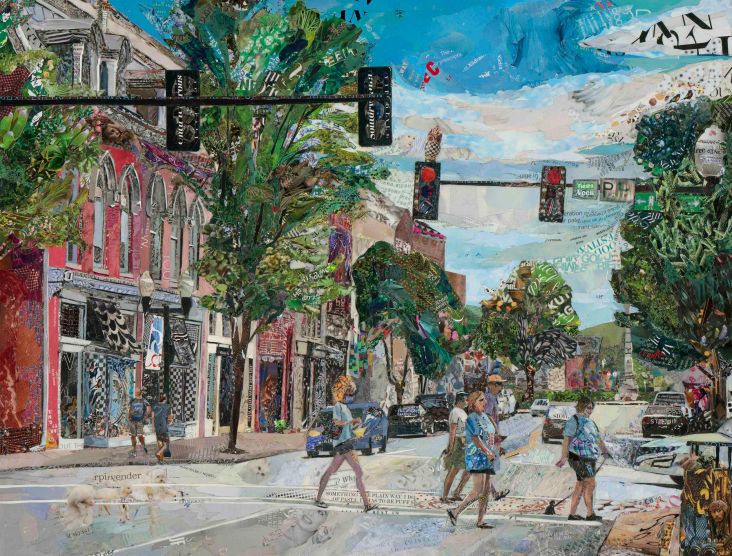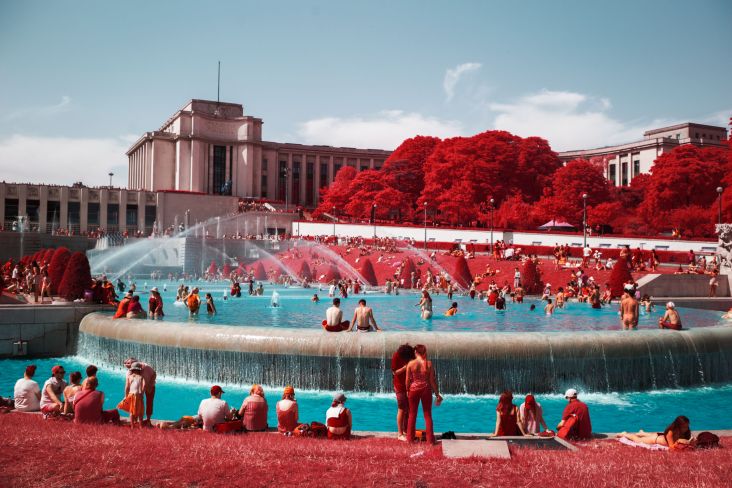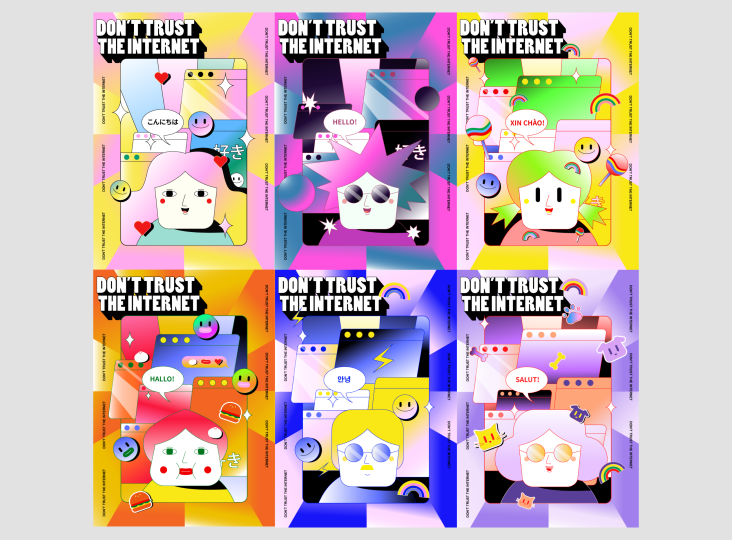Illustrator Ida Henrich on smarter working and why there is no 'wrong' in our creativity
A freelance illustrator, mural artist and designer based in Glasgow, Ida Henrich creates colourful and energetic work, often exploring social and economic issues that are close to her heart.
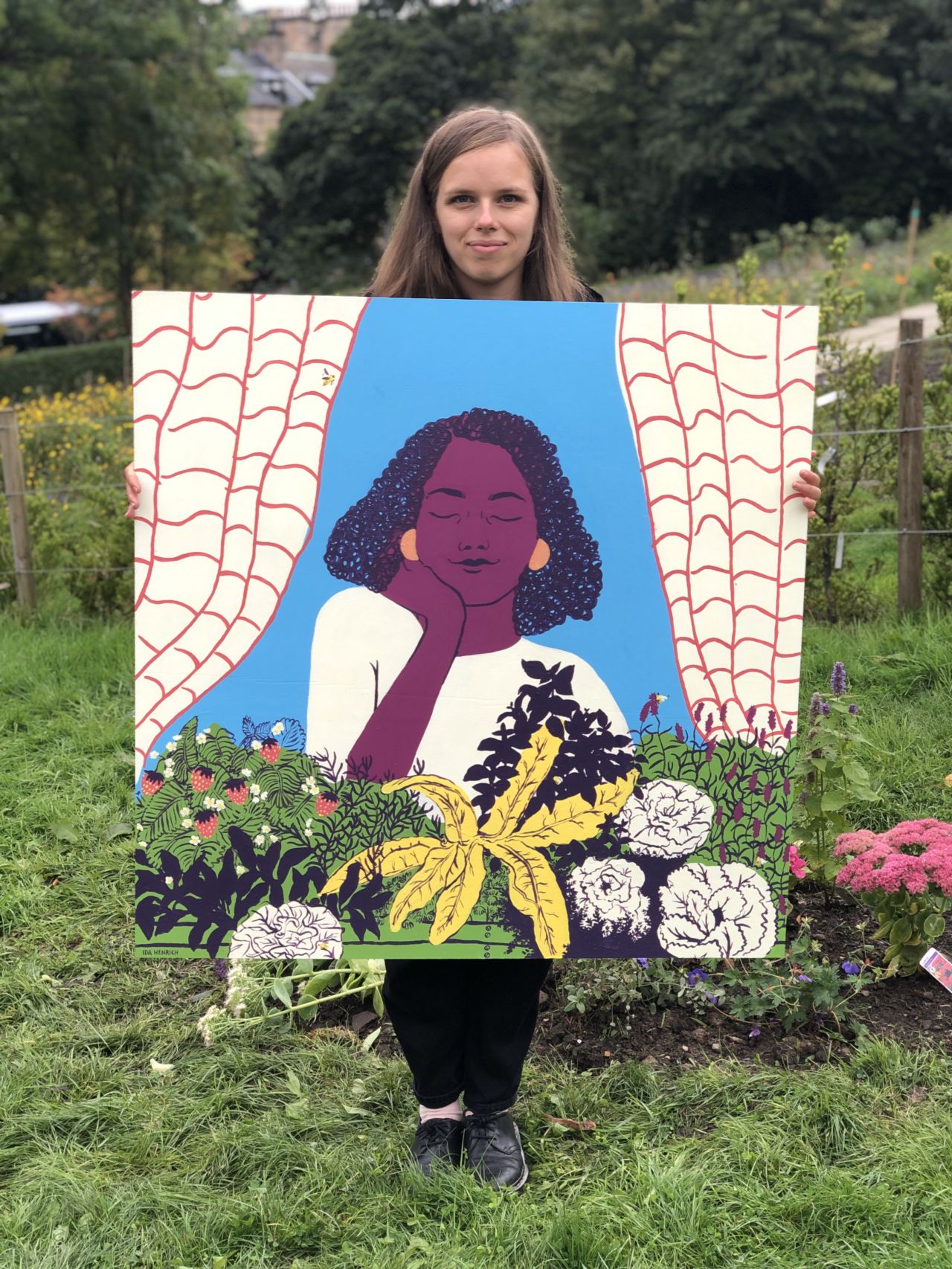
RSPB Glasgow to Globe Greenspace © Ida Henrich
Originally from Germany, Ida studied Communication Design at the Glasgow School of Art before throwing herself into illustration, working for publishers, newspapers and magazines such as Global Citizen, Strident and The Skinny. She built her business whilst working part-time for a local jewellery shop and today, four years after graduation and surviving a global pandemic, she is now freelancing for clients worldwide including RSPB Scotland and UK Youth 4 Nature.
Alongside her illustrations, Ida creates murals in and around Glasgow and is also partial to the odd cartoon and watercolour painting. It's so she can "break out" and do something creative without thinking about work. Following a meaningful project for COP26 last year, we thought we'd sit down with Ida to see how 2022 is looking for her so far.
Can you tell us about your journey to becoming an illustrator?
At the moment, I'm painting a lot of murals and am creating designs that help visualise research to make it more accessible. The thing I love about illustration, although challenging at times, is that every commission is unique and requires different problem-solving skills. I'm always surprised how the most random skills from my school art room still come in handy. The art room has always been my happy place. It's a place where you can fill a latex glove with latex to see if it turns into a latex hand. It does, but it takes a very long time and doesn't look as good as you would imagine.
As soon as I could focus my education on art, I did. I graduated with a degree in Communication Design from the Glasgow School of Art over four years ago. My first proper client commission came when I was still a student, working for a Scottish independent publisher. After art school, I had a day job at a jewellery shop to supplement my freelance work for a while. Then I got a post as an art editor for an Edinburgh based mental health magazine. I loved working with the talented artists who submitted their work to the project. It also taught me a lot about being on the other end of the email chain. I now always make sure people know exactly when they will hear back from me and with what.
In the summer of 2019, I decided it was time to focus on my own freelance career again. I soon landed some exciting jobs and was growing my brand. Then the pandemic started, and all of my projects were put on ice. That was tough. Luckily, since the restrictions eased again last summer, things are going full steam ahead, and I have worked with clients such as UK Youth 4 Nature, the RSPB Scotland, Climate Scotland, Global Citizen. I am about to begin painting a mural for the Glasgow School of Art.
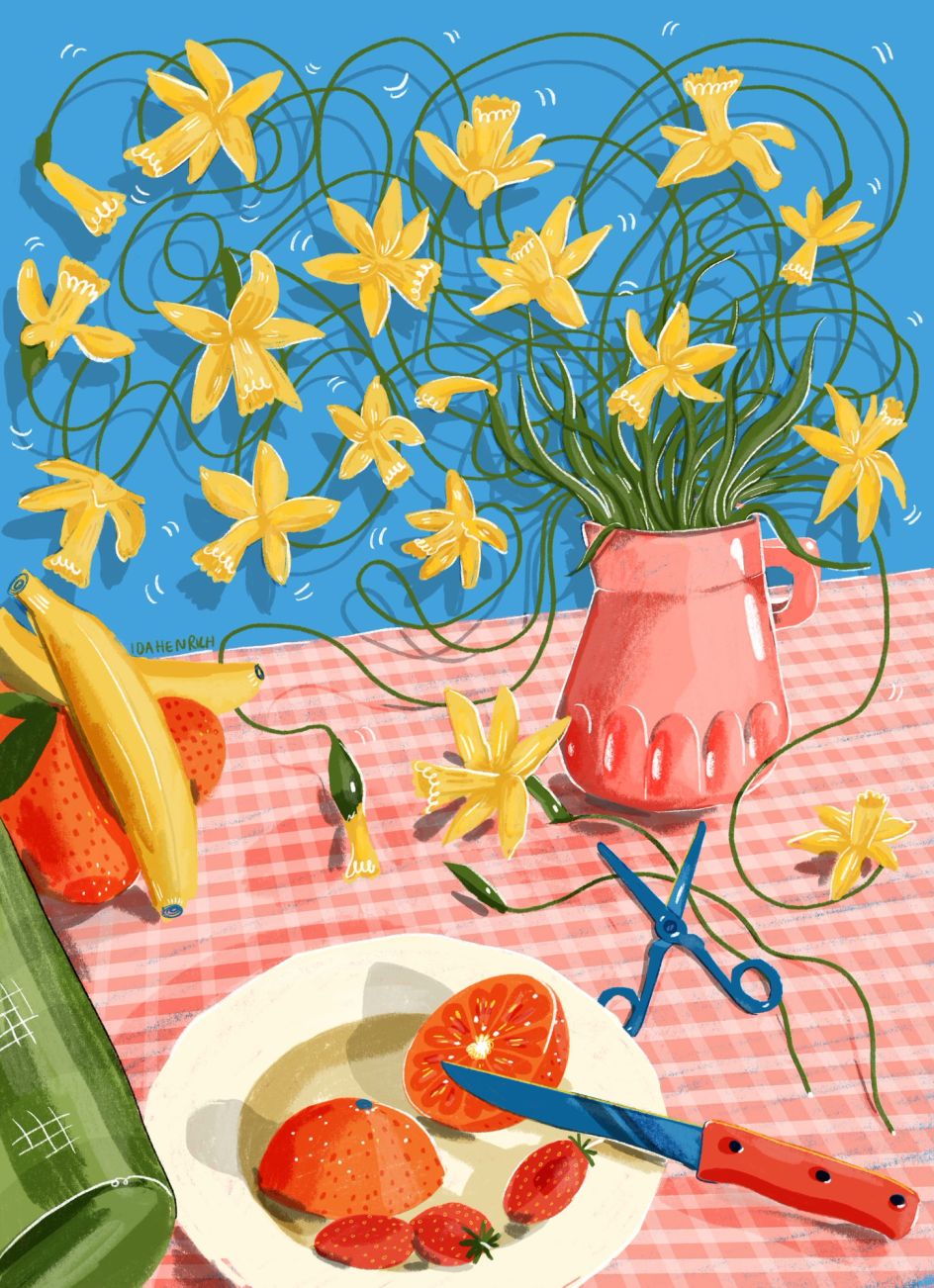
Contribution to Still Here, Still Life © Ida Henrich
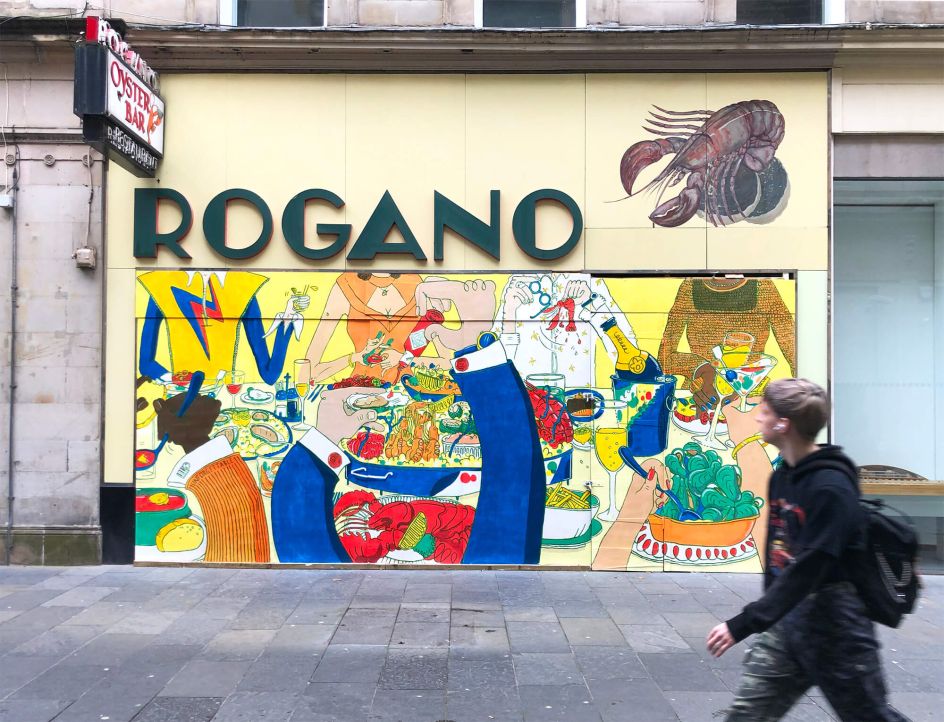
Mural for Rogano © Ida Henrich
You grew up in Germany?
I'm a countryside girl from Hesse in Germany. I'm one of six children, and we grew up in a beautiful old refurbished German mill. I love going back to see my family. It's so remote that going food shopping with my mum feels like an 'outing'. Germany is my place to recharge with nature and do nothing but chat with my family, cook together and eat. It's the only place I completely switch off.
Can you describe your style in your own words?
My style is a colourful fusion of illustration inspired by French Impressionism, modern graphic design and the creative freedom of cartoons. It is all about finding ways to celebrate the weird and wonderful every day.
You're also a cartoonist – tell us more!
Cartoons bring something special: energy, freedom and visual storytelling. I love how you can express those precious internal feelings in a facial expression and movement that we rarely show in public. There is honesty in the comic format. As my graduation project, I created a 48-page graphic novella about contraception. It was amazing to see how powerful a comic can be in helping people open. I had so many valuable exchanges on the back of this project.
I have never really identified with beautiful portraits of ethereal men and women in art and illustration. I always felt that reality is so much more odd and quirky. My cartoon style expresses this, and I hope that this also speaks to others. It's not as easy to sell as my 'prettier' illustrations, but I'm very proud of it. For some reason, cartoon styles are like marmite in the industry. I try to incorporate a bit of the charmingly ridiculous in my work.
You do a lot of work around meaningful causes. Is that important to you?
Yes, my illustration and cartoons are a great way to make complex topics accessible. Artwork is powerful because it provides a rapid foundation for conversations and learning. It is much faster to understand an image than to understand a paragraph of text.
I find it inspiring working with experts in a field. I have worked with several charities, researchers and recently kids who are experts in an area in Glasgow. It's a nice kind of teamwork making good things happen together.
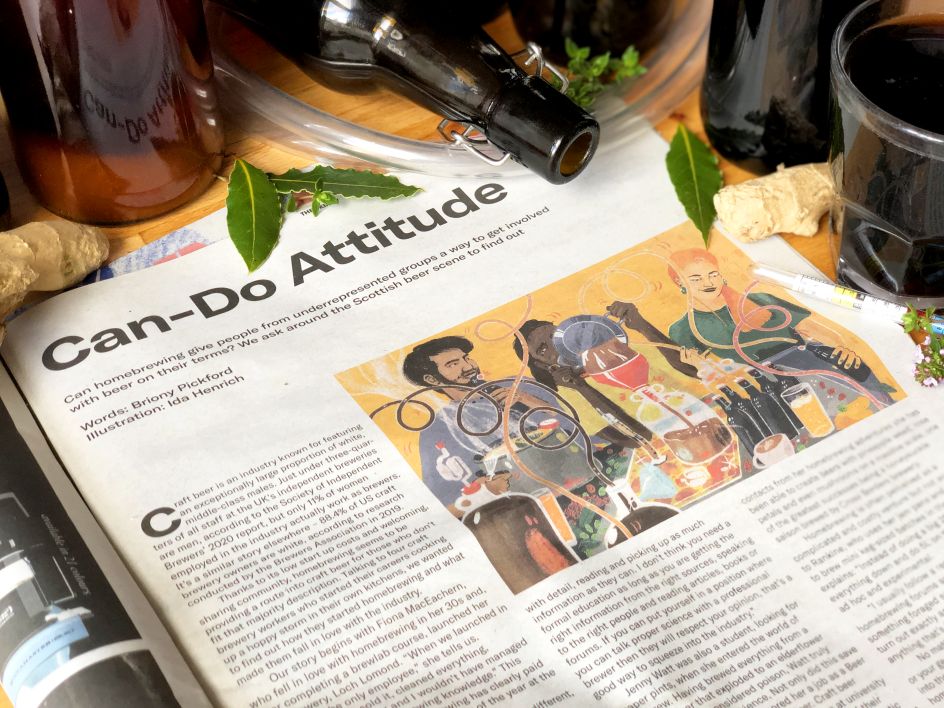
Illustration for The Skinny © Ida Henrich
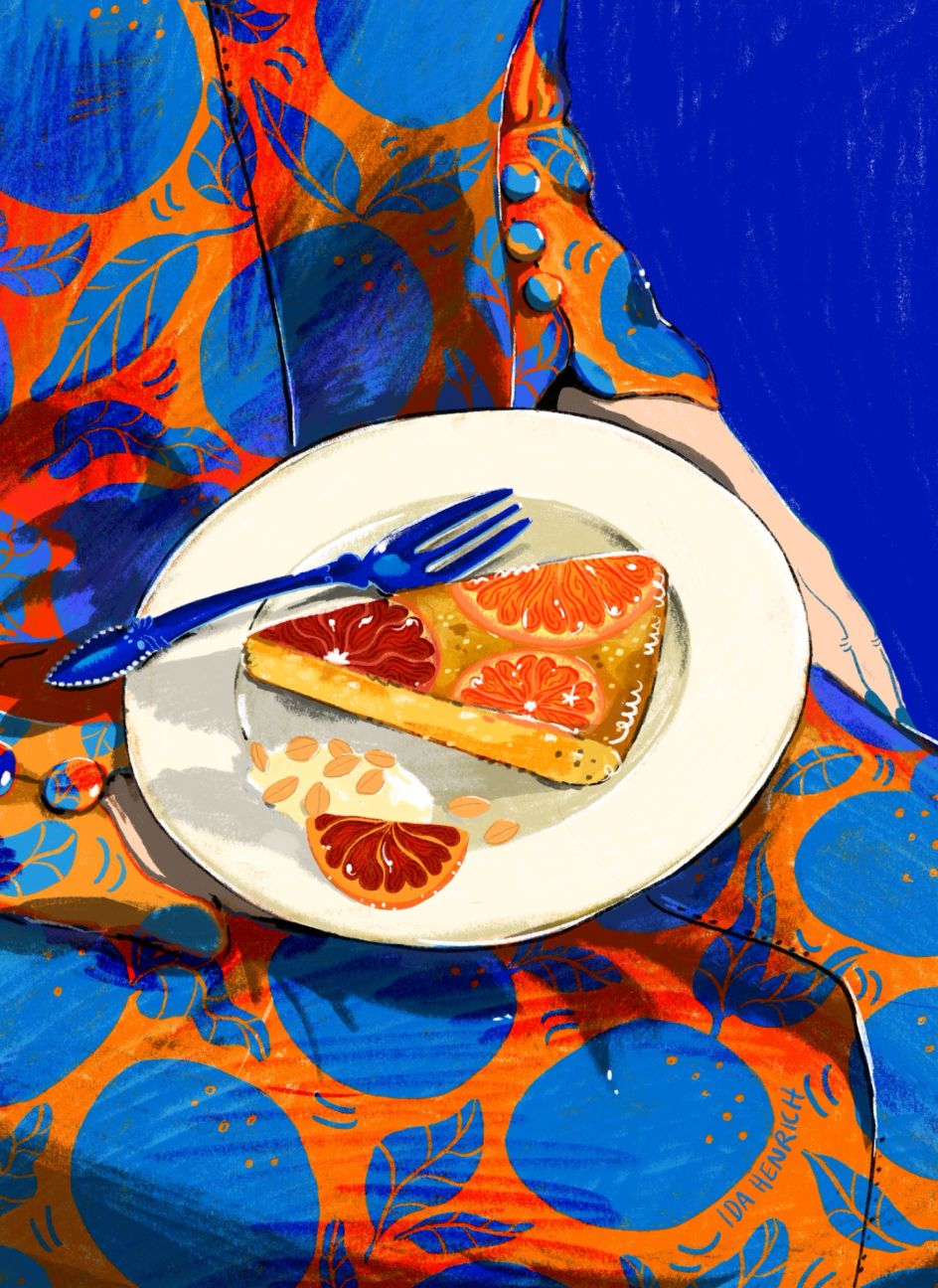
Contribution to Still Here, Still Life © Ida Henrich
Can you tell us more about your recent work for the Climate Scotland?
I live and work in Glasgow, so COP26 coming here last autumn was an exhilarating prospect for creating meaningful work. As a small creative team, Kaitlin Mechan, Indrė Šimkutė and I were commissioned Global Scotland to create nine designs depicting the messages of the people of Scotland gathered in their climate change campaign. We made three artworks each and all went on display at the RSPB Glasgow to Globe Green Space for Climate Scotland in the Glasgow Botanic Gardens during COP26.
I love that we started with documents and research and created nine artworks that might speak to Glasgow's COP26 visitors and the people who took part in the campaign. The artworks will be donated to different community gardens around Glasgow when they are taken down. I can't wait to see where they end up. I believe that murals start conversations about topics we care about often reveal that other people also care – which is a nice feedback loop. I'm proud of the artwork we have created.
Working with two talented illustrators was inspiring. We met up and discussed our matching colour pallets and design ideas. I liked how we all shared ideas and came up with something better because we worked together.
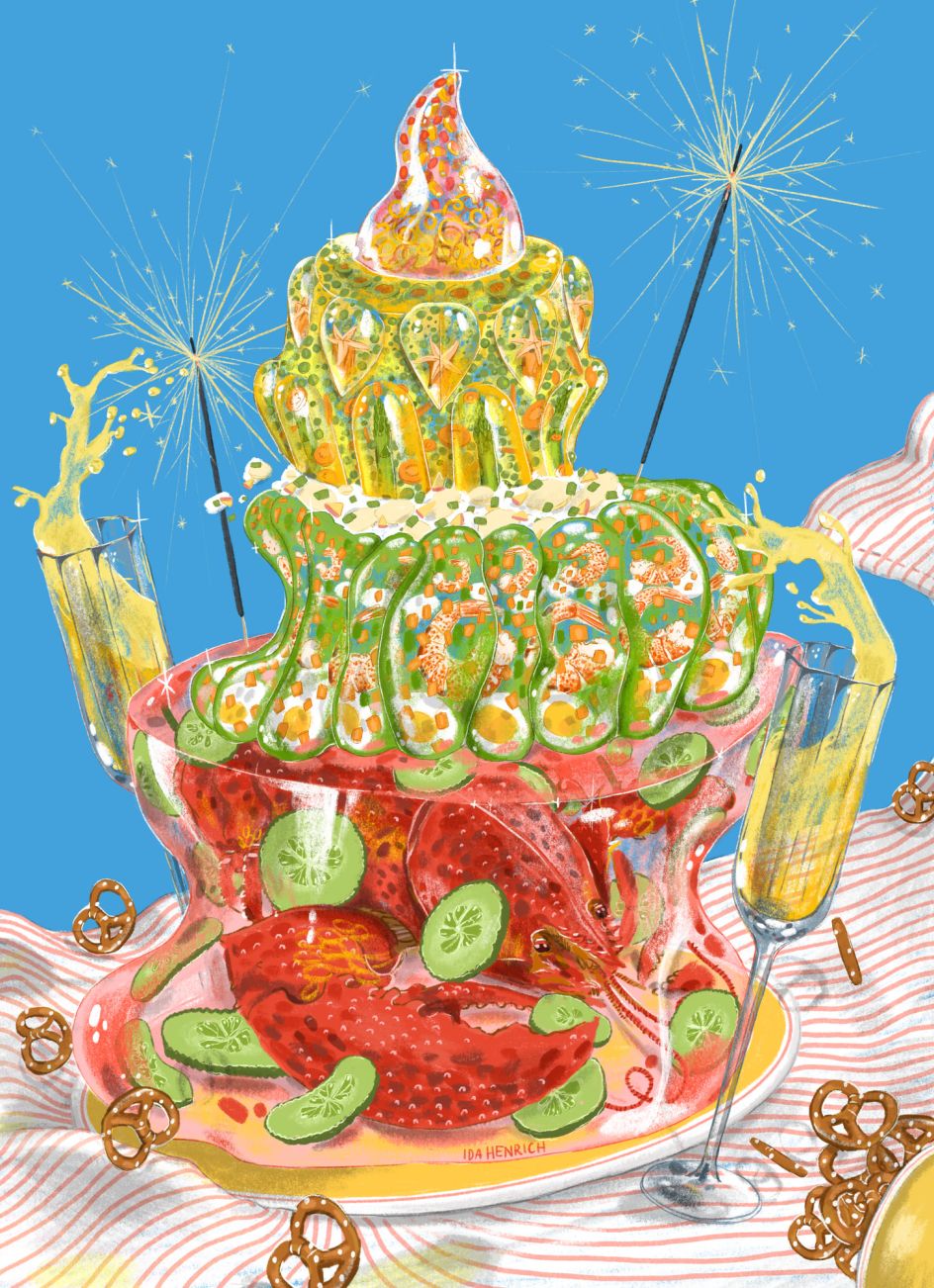
Jello Date, personal work © Ida Henrich
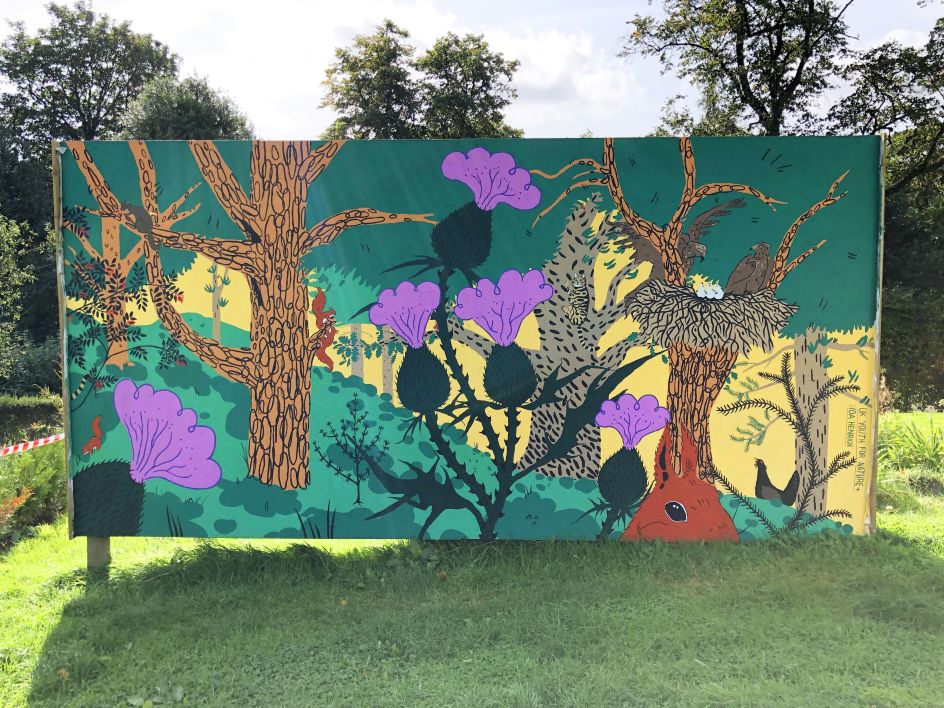
Wild Wall, UK Youth for Nature © Ida Henrich (Photography by Greg McKinney)
How did you cope with the pandemic?
Honestly, I was stressed. All my projects were cancelled, and I worked hard to figure out something that would work, but nothing did. I burned myself out and kept questioning my life decisions – becoming an artist.
I have two friends who live next door, and they spent the pandemic in their garden with a glass of wine, and in retrospect, I wish I had done that. I think focusing on my business was a way for me to hold onto some control while everything was up in the air.
Then in August last year, I went on the West Highland Way, a seven-day hike in remote parts of Scotland, and I kept getting emails whenever I had a signal. By the end, I was booked up for the next three months, and I have been more or less busy ever since. I have a theory that holidays are always good for business.
How do you feel about 2022 so far?
I can't believe there is a war in Europe right now and that there is talk of getting the big nuclear guns out while we are still in a pandemic. I'm honestly a bit stunned. Sometimes, when I watch back at shows from summer 2019, I can't believe we are here right now.
In contrast with that, I'm currently preparing to begin a large mural and have some more in the pipeline. The business makes me relax a little and worry less about my future.
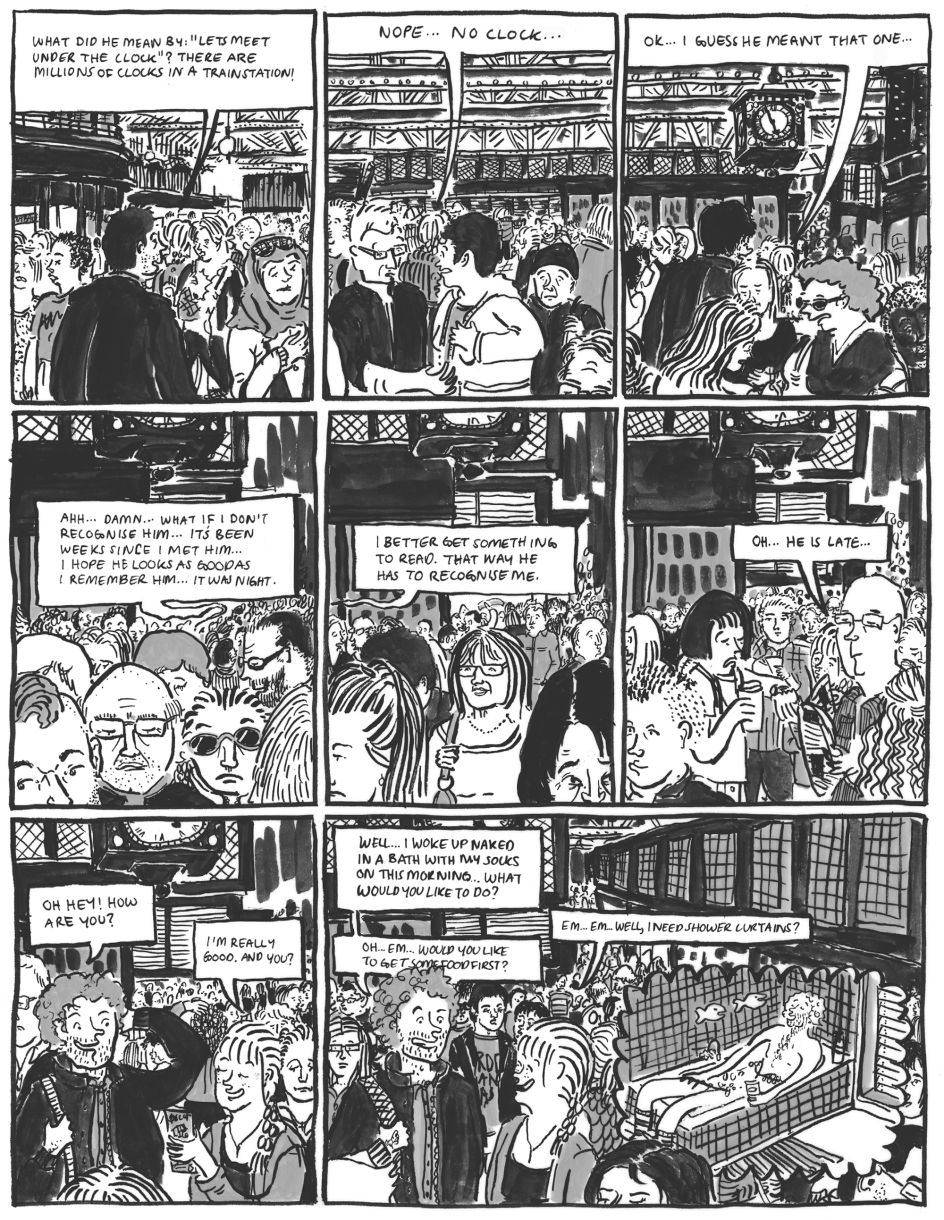
Minor Side Effects comic © Ida Henrich
Can you share anything else about your work and practice?
Watercolour painting is my hobby because I don't do it commercially. Nearly everything I do creatively, I think about how "it" could be useful to my business. For a long time, I mourned the loss of my hobby – drawing – because it feels like work. I'm obviously very blessed to call this my job, but sometimes I also want to play with art for me. I love finding old books on watercolour painting in charity shops. And learning nerdy tips about how to dry and store a brush correctly.
Is there anything that frustrates you about the creative community? What would you like to see change?
The focus is on finding what is "wrong". I had a free portfolio consultancy session during the pandemic. I went into it thinking that something must be wrong with my portfolio, and if I resolved this one or two things, all the clients would come knocking. The consultant then said to me, "I don't know why you all ask me what is wrong with your portfolio? You are all the experts in the field, and you are all worried something is not right".
We are the experts in our field. We spend so much time working, drawing, researching and living illustration. It's a huge investment. How come we all feel this way? We need to talk more about what is working. When students study illustration, we need to make them feel confident and comfortable in their skills, as constant self-doubt is exhausting. If a client doesn't think your work matches their brand, it's not a failure. It is simply not right for them, and probably you either. How come I had to find that out on my own and feel bad along the way? If we are all feeling like imposters, something is wrong! I now try and stop myself from completely breaking down my work until I hate it. I could go on and on about this.
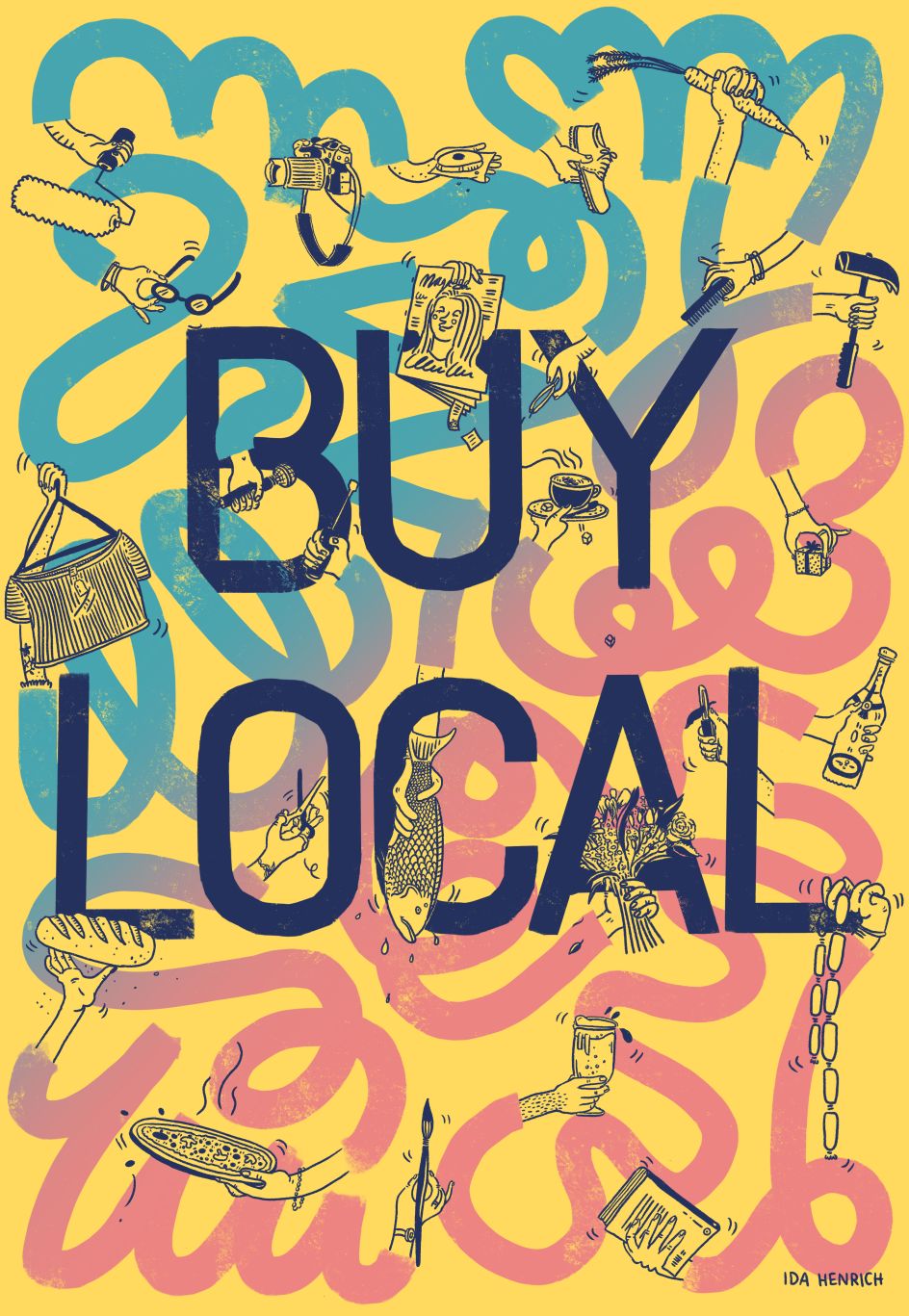
Buy Local, August 2020 © Ida Henrich
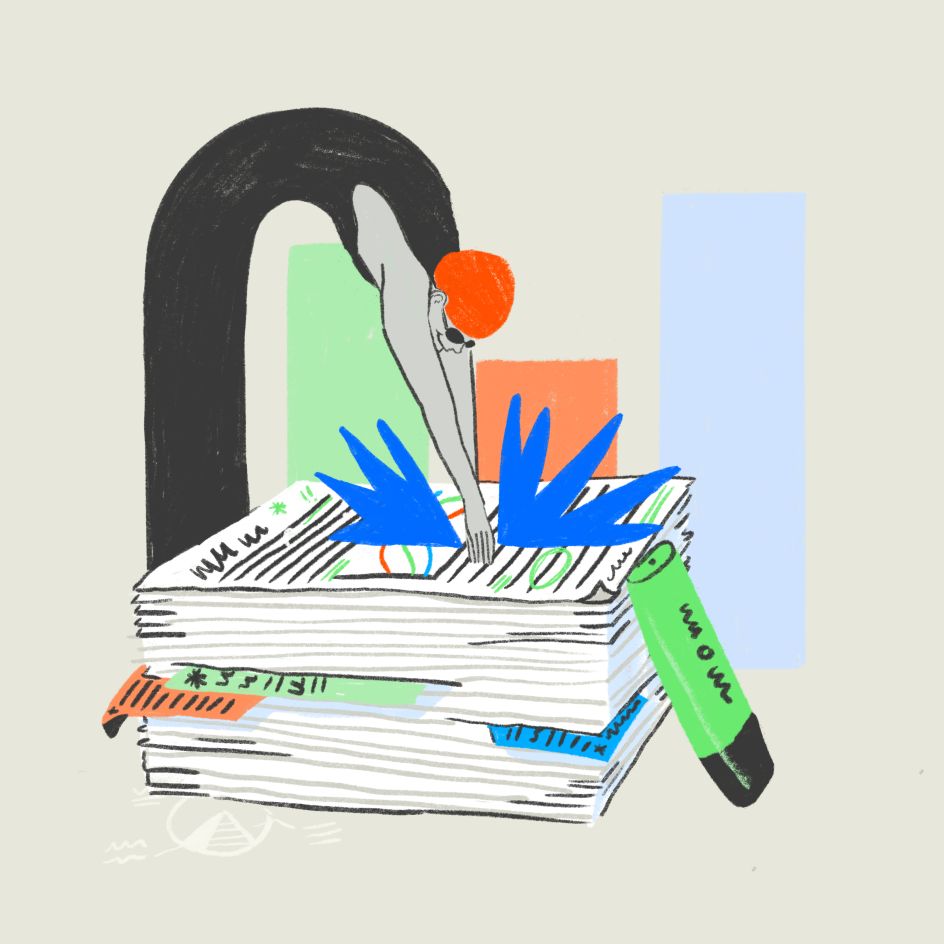
© Ida Henrich
What advice would you give to others hoping to have a creative career?
In my first year at art school, one of the MFA students said to me: "Ida, you should work like a horse, not like a donkey". He meant that I should work cleverly rather than like a martyr. Create realistic targets you can sustain over a long period, rather than working so hard you crush in cycles of work and exhaustion (speaking from experience). When you plan your tasks, think about your creative capacity in the week. How much can you do comfortably before you start getting tired and procrastinating? That's the sweet spot.
It takes time to build up an illustration business. I'm honestly not sure it goes any faster if you work yourself to death on the way. From the client's perspective, they want to see you are reliable and consistent, and that just takes time. If you complete all of your tasks at 2.30pm on Friday, take the afternoon off, that's what everybody else in normal jobs would do. Be a good manager to yourself.
Also, get yourself a free email CRM and organise your leads into industry groups. For example: 'Magazine, Fashion' or 'Magazine, Food'. That way, if you want to send people in the 'food magazine' world a three page PDF with your food work, you can automate the process, making it a lot less emotionally draining. I usually try and contact at least ten possible client leads every week, which can be pretty quick once you have a good list of leads built up over the years.
Make other freelance friends so you can discuss the day-to-day issues with other people. You don't need to feel completely alone.
For graduates, remember when you leave art school that you have been creating work in the context of education. Spend some time exploring your own style outside of the institution. I think of this process as an experienced baker developing new recipes when they open a new bakery. It was tasty before, but do you want to make your buns as you did for the old clients?
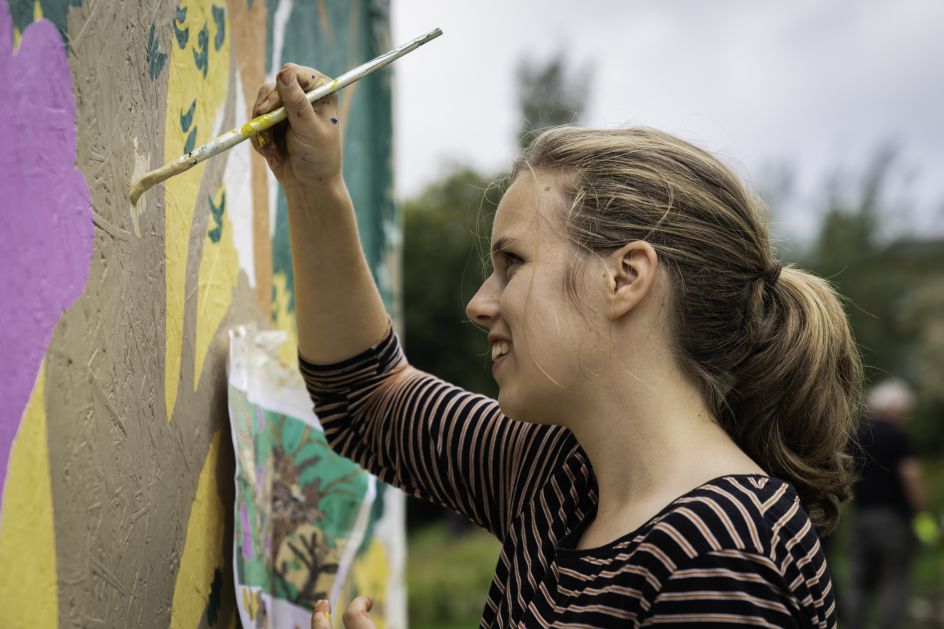
Ida Henrich (Photography by Greg McKinney)




 by Tüpokompanii](https://www.creativeboom.com/upload/articles/58/58684538770fb5b428dc1882f7a732f153500153_732.jpg)


 using <a href="https://www.ohnotype.co/fonts/obviously" target="_blank">Obviously</a> by Oh No Type Co., Art Director, Brand & Creative—Spotify](https://www.creativeboom.com/upload/articles/6e/6ed31eddc26fa563f213fc76d6993dab9231ffe4_732.jpg)








